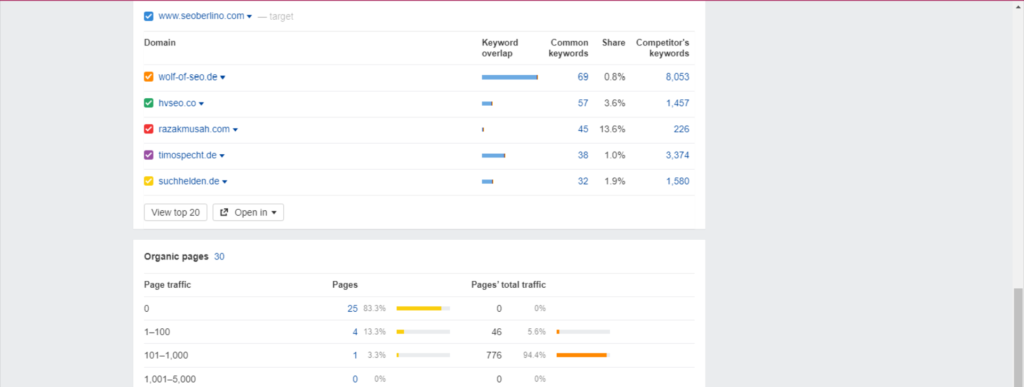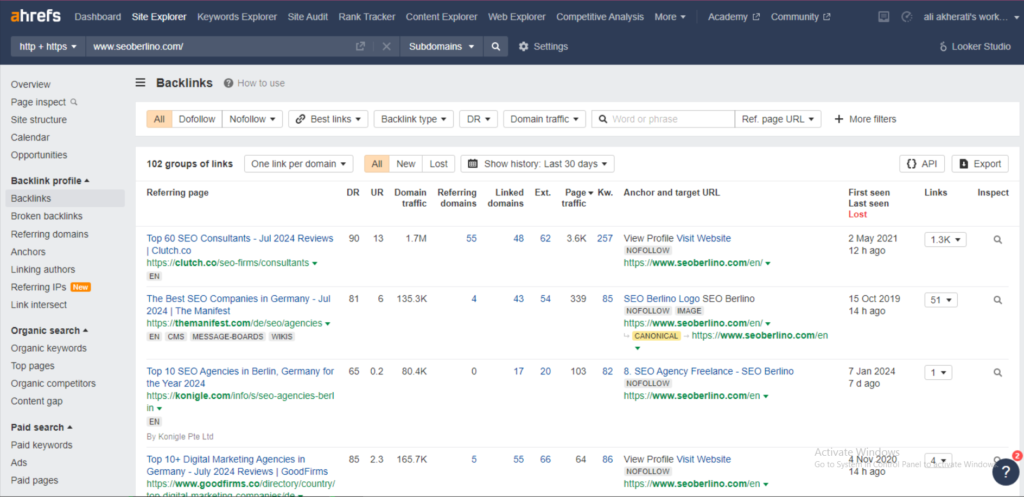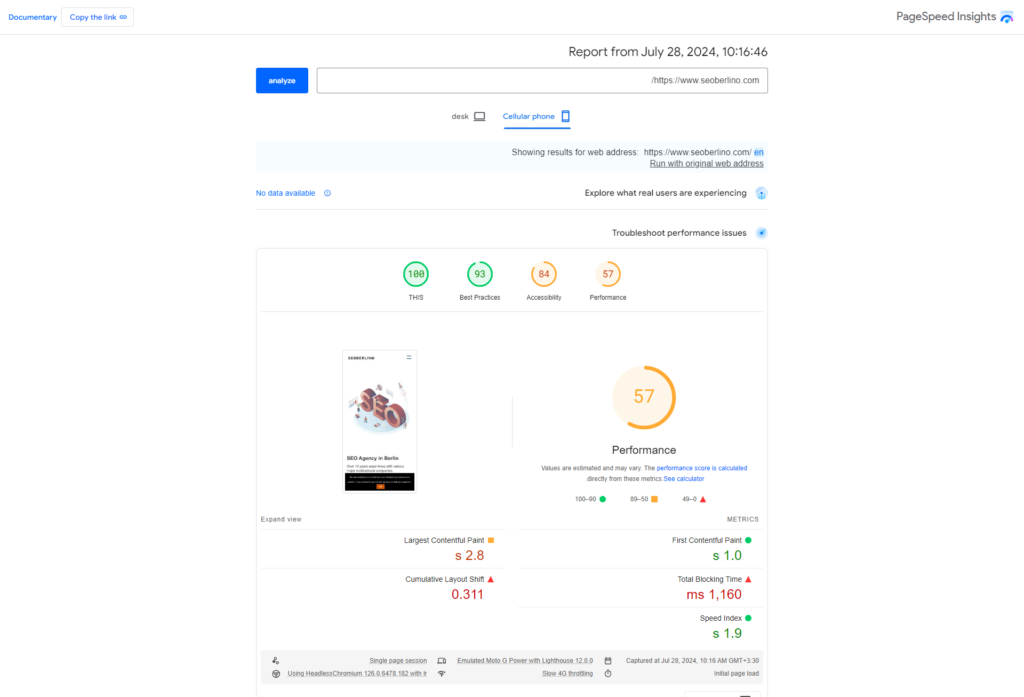SEO Competitor Analysis: Definition, Importance & Implementation

In today’s digital age, optimizing your website isn’t enough to stay ahead of the competition. To truly excel, you need to understand what your competitors are doing right. This is where SEO competitor analysis comes into play. By studying the strategies that help your competitors rank high on search engines, you can refine your tactics to surpass them. This article will guide you through the essentials of SEO competitor analysis and how to leverage it for your online success.
What is SEO Competitor Analysis?
SEO Competitor Analysis involves examining your competitors’ online strategies in detail. This includes their keyword usage, content strategies, backlink profiles, and more. The goal is to gather actionable insights that enhance your SEO strategy, improving your website’s visibility and performance in search engine rankings.
Competition in the international arena can be intense. Competitor analysis is a critical step to increase market share and gain a better position in target markets.
Ercan ATAY, International SEO Strategies, Tips and Recommendations
Why is SEO Competitor Analysis Important?
- Identifying Market Trends
- Benchmarking Performance
- Finding Keyword Opportunities
- Content Strategy Insights
- Backlink Acquisition
- Competitors’ Weaknesses
- Improving User Experience
- Staying Competitive
- Cost-Effective Marketing
- Identifying Gaps in the Market
By analyzing competitors, you can identify market trends and strategies that are working well in your industry. This can help you stay ahead of the curve and adapt to changing market conditions. Understanding how your website performs relative to competitors allows you to benchmark your performance. This helps in setting realistic goals and expectations for your SEO efforts.
Competitor analysis can reveal keyword opportunities that you might have missed. By understanding which keywords are driving traffic to your competitors, you can optimize your content to target these keywords and capture a share of that traffic. Examining the content that performs well for your competitors, you can gain insights into what type of content resonates with your target audience. This can inform your content creation strategy to improve engagement and visibility.
Analyzing your competitors’ backlink profiles can help you identify potential link-building opportunities. Understanding where their backlinks come from can guide your outreach efforts to build a stronger backlink profile. Identifying weaknesses in your competitors’ SEO strategies can provide opportunities for you to capitalize on. For example, if a competitor is ranking well but has poorly optimized content, you can create better-optimized content to outrank them.
When it becomes to make money online using SEO, understanding your competitors and their strategies is crucial.
Competitor analysis can highlight best practices in website design and user experience. By understanding how competitors structure their sites and engage with users, you can make improvements to your own site to enhance user satisfaction. The SEO landscape is constantly evolving. Regular competitor analysis helps ensure that you are aware of any new tactics or strategies that competitors are employing, allowing you to adapt and stay competitive.
By learning from your competitors’ successes and failures, you can avoid costly mistakes and focus your resources on strategies that are more likely to yield positive results. Competitor analysis can help you identify gaps in the market that are not being addressed by your competitors. This can provide opportunities for you to create unique value propositions and capture underserved segments of the market.
10 Key Components of SEO Competitor Analysis
Here are the primary components:
Keyword Analysis: The keywords that competitors are ranking for, their search volumes, and the difficulty levels. This uncovers opportunities for targeting high-value keywords.
Content Analysis: Evaluating the type, quality, and structure of content that competitors are producing. Includes examining blog posts, articles, videos, infographics, and other content formats to determine what resonates with the audience.
Backlink Analysis: Backlink profiles analyze of competitors to understand the sources and quality of their inbound links and this helps identify potential link-building opportunities and strategies.
Technical SEO: Assessing the technical aspects of competitors’ websites, such as site speed, mobile-friendliness, URL structure, schema markup, and overall site architecture that ensures your site meets or exceeds industry standards.
On-Page SEO: On-page elements like title tags, meta descriptions, headers, and keyword usage on competitors’ pages help in optimizing your on-page SEO elements to improve rankings.
Off-Page SEO: Test competitors’ off-page SEO efforts, including social media presence, influencer partnerships, and other external factors that contribute to their online authority.
User Experience (UX): Analyzing the user experience of competitors’ websites, including design, navigation, engagement metrics (such as bounce rate and time on site), and overall usability.
Traffic Analysis: Traffic volume and sources (organic, paid, direct, referral, social) of competitors show their traffic generation strategies and the effectiveness of their campaigns.
Competitive Positioning: Understanding how competitors position themselves in the market, including their unique selling propositions (USPs), target audience, and overall marketing strategies.
Performance Metrics: Tracking key performance indicators (KPIs) such as domain authority, page authority, organic search rankings, and conversion rates to benchmark against competitors.
8 Steps to Conduct SEO Competitor Analysis
For better understanding of Competitor Analysis, I implemented each step by considering our website “GentSEO.com” as a sample.
1- Identify Competitors: List your direct and indirect competitors
Identifying competitors involves recognizing businesses that offer similar products or services. Direct competitors provide the same or similar offerings, while indirect competitors offer different products or services that fulfill the same customer’s need.
Direct Competitor (SEO Services): https://www.seoberlino.com/en
Indirect Competitors (UI/UX): https://clay.global/
2- Gather Data: Use SEO tools to collect data on your competitors
SEO tools help collect valuable data on competitors, such as their search engine rankings, keyword strategies, and website traffic. Tools like SEMrush, Ahrefs, or Moz can provide insights into how competitors are performing online.
Example: Using Ahrefs, you can track the organic search performance of a competitor’s website, identifying their top-performing pages and traffic sources.

3. Analyze Keywords: Find high-performing keywords and gaps you can exploit.
This step involves finding which keywords your competitors are ranking for and identifying opportunities where you can rank better. Look for high-performing keywords your competitors dominate and gaps where they might be underperforming. The keyword analysis tools such as Google Keyword Planner and Semrush can have great impact on your analysis.

4. Evaluate Content: Analyze the quality and frequency of your competitors’ content.
Content assessing means how well your competitors’ content engages their audience, the topics they cover, and how frequently they publish new material. This helps you understand their content strategy and identify areas where you can do better. Do not forget to use content analyzing software such as Atlas and Surfer to achieve better reports.

5. Assess Backlinks: Examine your competitors’ backlink profiles.
Backlinks analyzing reveals the quantity and quality of links pointing to your competitors’ websites. High-quality backlinks from reputable sites can significantly boost a site’s SEO performance. It is better to use tools like Backlinko and Backlink-tool that made specifically for this purpose.

6. Check Technical SEO: Audit the technical aspects of your competitors’ websites
The backend elements of your competitors’ websites, such as site speed, mobile-friendliness, and proper use of tags should test. A technically sound website performs better in search rankings.

7. Review User Experience: Navigate your competitors’ websites as a user
Exploring competitors’ websites from a visitor’s perspective gives you valuable information. Pay attention to ease of navigation, the intuitiveness of the layout, and overall design quality to understand how they keep users engaged.
8. Synthesize Findings: Compile your findings into a report with actionable insights
Synthesizing findings involves consolidating all the collected data and insights into a comprehensive report. This report should highlight strengths and weaknesses and provide actionable recommendations to improve your strategies.
What Is Next?
This is the last part of our article. After implementing all the steps of Competitor Analysis and gathered the necessary information it is time to use and constantly monitor the results and feedbacks. Let’s list these process together:
1. Develop and Implement Strategies
Based on the insights gathered from competitor analysis, create and implement strategies to improve your market position.

Content Strategy: Develop a content calendar.
SEO Optimization: Implement technical SEO improvements and enhance on-page SEO.
User Experience: Redesign or tweak your website, load times, and mobile responsiveness.
Backlink Strategy: Create a plan to earn high-quality backlinks.
2. Set Goals and KPIs
Define clear, measurable goals and key performance indicators (KPIs)
3. Monitor and Track Progress
Regularly monitor your progress towards the set goals using analytics tools. If you need to have a better overview about the SEO tools, you can read our comprehensive Best SEO Tools (2024) article.
4. Continuous Competitor Monitoring
Keep an eye on your competitors continuously to stay updated with their strategies and performance.
5. Engage with Your Audience
Engage with your audience through multiple channels to build a loyal customer base and gather feedback for continuous improvement.
6. Adjust and Optimize Strategies
Based on the feedback and performance data, continually refine and optimize your strategies to achieve better results.
7. Expand Market Research
Expand your market research to explore new opportunities and trends that can give you a competitive edge.
8. Collaborate and Network
Build relationships with industry influencers, partners, and even competitors to gain insights and expand your reach.
9. Innovate and Experiment
Constantly seek innovative approaches and experiment with new ideas to stay ahead of the competition.
10. Document and Share Findings
Document your findings and insights to create a knowledge base that can be referred to and shared within your organization.
At the End:
An effective Competitor Analysis framework will not only helps you identify competitor keywords but also uncover opportunities to outrank them. By analyzing factors such as their backlink profile, content strategy, and website structure, you can identify gaps in their SEO strategy and capitalize on them. By following this framework, you will be able to conduct a through competitor analysis and gain the knowledge needed to inform your keyword research and SEO strategy.
References:
- https://www.google.com/search?sca_esv=045202e8b9d90fc1&hl=en&sxsrf=ADLYWIIn9bmDJuzqD39-mfH692zsOt_VaA:1722073751127&q=inauthor:%22Ercan+ATAY%22&tbm=bks
- https://www.google.com/books/edition/International_SEO/6DsCEQAAQBAJ?hl=en&gbpv=0
- https://gentseo.com/
- https://www.seoberlino.com/en
- https://www.semrush.com/
- https://ahrefs.com/
- https://moz.com/
- https://gentseo.com/blog/12-in-2-best-seo-tools-in-the-world-2024/
- https://www.google.com/books/edition/Search_Engine_Optimization_SEO_Course/Gjj6EAAAQBAJ?hl=en&gbpv=0
- https://www.linkedin.com/in/brian-smith-mediusa/
- https://ads.google.com/aw/keywordplanner/home
- https://www.semrush.com/
- https://surferseo.com/
- https://atlasti.com/
- https://backlinko.com/tools/backlink-checker
- https://www.backlink-tool.org/en/



